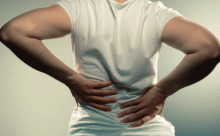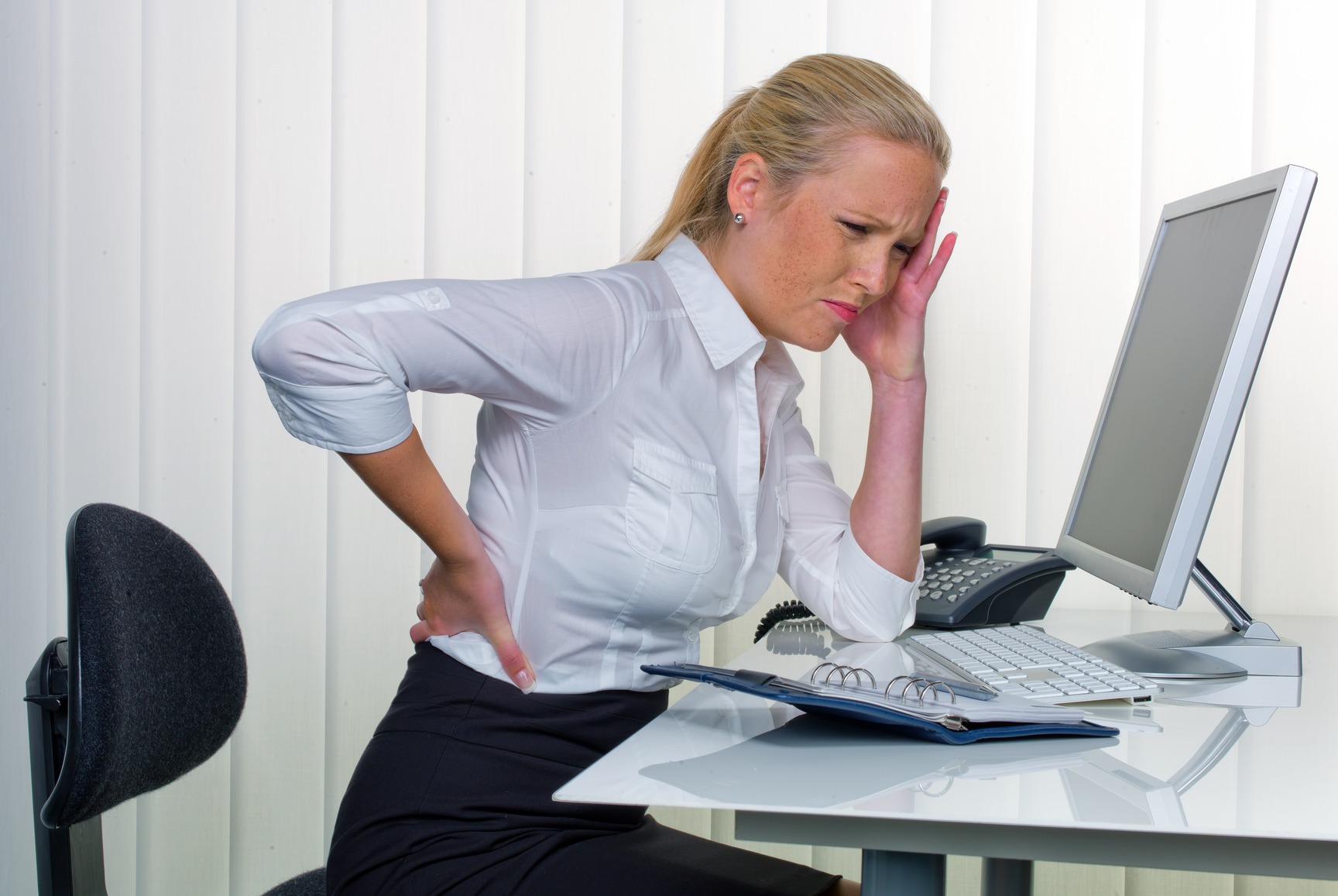
Furthermore, Health Canada estimated that musculoskeletal disorders including back pain costing society $16.4 billion in combined direct (treatment and rehabilitation) and indirect (lost productivity) costs.
Firstly, Back pain is a leading cause of prescription (and non prescription) drug use, medical visits, hospitalizations and restricted physical activity. In Ontario alone back pain accounts for one-third of lost work claims according to the Institute of Work and Health.
The main causes of back pain are: improper lifting, carrying heavy articles, sports injuries, poor posture, health conditions, an unsupportive mattress, and work related injuries.
Acute and Chronic lower back pain
It should be noted that Acute back pain is if an episode of pain lasts less than 3 months. Most back pain is acute and goes away with 4 to 6 weeks of treatment. Secondly, Recurrent back pain is if acute symptoms come back. Most people have at least one episode of recurrent low back pain.
Chronic back pain is if your back bothers you most of the time for longer than 3 months.
Many ordinary activities like working at a computer or driving can lead to a posture that puts additional pressure on your lower back. Furthermore, By the time you feel pain the problem has most likely been in the making for some time. In fact, in 1999, Canadians spent $21.5 million on back pain products. Yet while many of these avenues offer relief, they may not get to the root of the problem.
In addition, Back pain affects Canadians of all ages and slightly more women than men. Their effect has the greatest impact on adults under 45 and is only second to arthritis in those 45 to 65 years of age. Furthermore, it’s the number one cause of limited activity keeping them from work, out of the game, and away from the garden.
Firstly, The findings also show that almost half the people asked said that coping with back pain made it more difficult to concentrate on everyday tasks. First and foremost which means they are not just dealing with the pain but also having to manage the disruption it causes in their life and the lives of those around them!
Some Back Pain Statistics
• From 2000 to 2004 WorkSafeBC (Workers’ Compensation Board) received over 107,000 claims for back strains.
• Back strains account for just over 25% of all WorkSafeBC (Workers’ Compensation Board) claims.
• Roughly 30% to 40% of all workplace absences in Canada are due to back pain.
• Back injuries may be caused by a single instance of overexertion or develop as a result of repeated motion over time. Over two-thirds of back injuries are a result of overexertion.
• 60% to 90% of the population will experience low back pain in their lifetime.
• More than 90% of lower back pain cases have no specific cause (such as infection, osteoporosis, arthritis, etc
• In the health care industry, injuries due to patient handling (lifting, transferring, or repositioning) account for about 35% of all accepted time loss claims and for about 40% of claim costs.
Canadians and lower back pain:
Almost nine out of 10 Canadians rated back pain as an important public issue. While some people treat only their pain, others ignore it altogether, dismissing its severity or thinking it will just go away. But because so many people’s everyday activities contribute to the problem, backs are routinely and repeatedly exposed to risks. And the reality is that ignoring the problem doesn’t make it go away.
Firstly, it can make it worse. For Canadians suffering from back pain getting back on their feet means taking an active role in treating not just the symptoms but also the problem. Secondly, and to help them chiropractors are able to offer a variety of treatment options.
Common questions about low back pain:
How do you get back pain? One of the most common causes of low back pain (LBP) is an overuse syndrome that creates muscular pain. However, other significant causes of low back pain include direct trauma, lifting and twisting, age-related changes creating degeneration, and postural stresses.
How is it treated?
Chiropractic:
Chiropractors are practitioners of choice when it comes to back pain, and have a high rate of patient satisfaction. About four million Canadians consult a chiropractor each year. Joint manipulation and home-based exercises are the best first line treatment options for most causes of LBP; a supervised chiropractic program is beneficial.
Three recent reports have concluded that increased utilization of chiropractic care can contribute to improved productivity and reduce benefit costs.
As well, patients treated by a chiropractor for back pain returned to work sooner and had reduced rates of chronic problems and hospitalization.
Reports demonstrate that chiropractic is a more effective – and more cost-effective – care for occupational and non-occupational back injuries and related conditions than other common forms of treatment. And chiropractic can play an even greater role in improving organizational health and productivity, and reducing absenteeism and disability.
For more information about the effectiveness of chiropractic treatment for back pain, click here!
To read about spinal manipulation technique and its effects on low back pain, click here!
Massage therapy:
Most people, in their life time, have experienced low back pain. It is one of the most common musculoskeletal disorders of today’s society. Many times, people will suffer through the discomfort, not really knowing that relief is just around the corner! Did you know that the Canadian Medical Association Journal published a study recently about low back pain and massage therapy? The conclusion was that of the people who completed the study, 63% of the people receiving comprehensive Massage Therapy reported NO PAIN after 1 month.
For more information about the effectiveness of massage therapy for back pain, read this article.
Active Release Technique:
Active Release Techniques® (ART®) is a very effective method to treat many common back problems and is helping to get back pain sufferers doing their favorite activities again. ART treatment is highly successful in dealing with pain and injuries because it is specifically designed to locate and treat scar tissue adhesions that accumulate in the muscles and surrounding soft tissues.
Read more about ART and back pain here.
Acupuncture:
Acupuncture has been proven to provide relief for low back pain. This pain is the most common reason for an appointment with an acupuncturist.
Orthotics:
Whenever we stand, walk, or run, the lumbar spine and pelvis balance on the legs. If there are leg length inequalities, foot asymmetries, or postural misalignments exist, abnormal forces traveling up the kinematic chain will interfere with spinal (low back) function.
Most low back pain is due to some form of musculoskeletal weakness or failure. A very common source of these problems is imbalances (pronation-shifting inward) at the feet.
The feet make up the postural foundation for the body. Statistical evidence says that at birth most people have perfect feet. By age 20, 80% of humans have developed some type of problem (pronation). By age 40 nearly everyone has some kind of foot condition. Many foot problems eventually contribute to health concerns farther up the kinematic chain, especially generalized back pain.
A major factor in reducing excessive forces on the lumbar spine is often overlooked by health care professionals: the use of external supports (orthotics/heel lifts/ metatarsal pads) to decrease external forces.
Example: If a patient presents with excessive foot pronation/arch collapse, a torque force will produce internal rotation stresses to the leg, hip, pelvis and low back. The result is recurring subluxations and eventual ligament instability affecting the sacroiliac and lumbar spine joints. These forces can be decrease significantly with the use of semi-rigid, custom made orthotics.
Is low back pain really a serious problem?
First of all, if it makes life more difficult for you, that’s serious in itself. Even if it goes away in a few days, you haven’t really gotten rid of the problem. It will most likely return and if left untreated, could be more debilitating the next time, which is why we recommend seeing a chiropractor at the first sign of back pain.
Lower back pain can also be accompanied by a variety of symptoms, some of which indicate very serious problems. Do you currently have, or have you ever had:
• Leg pain with numbness, tingling and/or weakness?
• Back of leg pain with coughing or sneezing?
• Difficulty standing up after sitting for any period of time?
• Morning stiffness?
• Pain after extended walking?
• Pain in your hip, buttock, thigh, knee or foot?
Have you answered YES to any of these? Read on……
If you’ve answered “yes” to any of these symptoms, it’s time you got help from a doctor of chiropractic. What will a chiropractor do?
Furthermore, Chiropractors use highly specialized, hands-on healing techniques (called adjustments) to correct spinal problems and offer long-term relief.
Your first visit will include neurological, orthopedic and chiropractic examinations, and if necessary, an x-ray may be recommended to assist in diagnosing your problem.
Once your chiropractor fully understands your condition they’ll give you a complete explanation of your test and x-ray results, along with an effective plan of treatment. Next step? Relief!
How does it work?
Through chiropractic adjustments, your body is given the opportunity to heal itself. That’s because once the spine is properly aligned, your entire nervous system can work the way it was intended. Health is restored naturally to your lower back and your whole body.
But long-term relief from back pain is a team effort. There’s plenty you can do as well. Consider a healthier lifestyle, moderate exercise, a well-balanced diet, and improving your posture. Your chiropractor will do the rest by providing your body with the necessary adjustments to help your spine be healthier and stay healthier so you can get back on track.
One kind of back pain: LUMBAR FACET IRRITATION
Reach behind you and feel the centre of your back, just above the buttocks. This is your lumbar spine. Lumbar facet irritation usually is a painful condition affecting the joints. These are responsible for connecting the spine with protection, limiting excessive motion and preventing the vertebrae from locking together.
Patients suffering from lumbar facet irritation usually complain of a well localized low back pain, meaning they can pin-point the exact site of discomfort. The condition is closely related to lumbar facet syndrome—however, patients with the latter also feel referred pain in one hip, buttock or upper leg. Facet irritation often precedes facet syndrome, usually if someone had the irritation treated properly. The onset of lumbar facet irritation is often sudden, occurring after a misjudged movement or while recovering from a bent position.
These activities may stretch the joint capsules (which protect and support the joints) or jam the facet joints, causing subluxations (restricted motion or abnormal positioning) in the spine and painful swelling. Other causes include poor posture, every day wear-and-tear and trauma to the low back.
Symptoms of facet irritation usually get worse when people sleep on their stomach, work with their arms above their head or rise from a sitting position. All these activities expose the joints to stress that they are not accustomed to, making them more vulnerable to injury and irritation.
Chiropractic is effective for lumbar facet irritation and syndrome. Chiropractors perform a procedure called spinal manipulative therapy, also known as an adjustment, which relieves pain and restores function to misaligned or malfunctioning joints.


